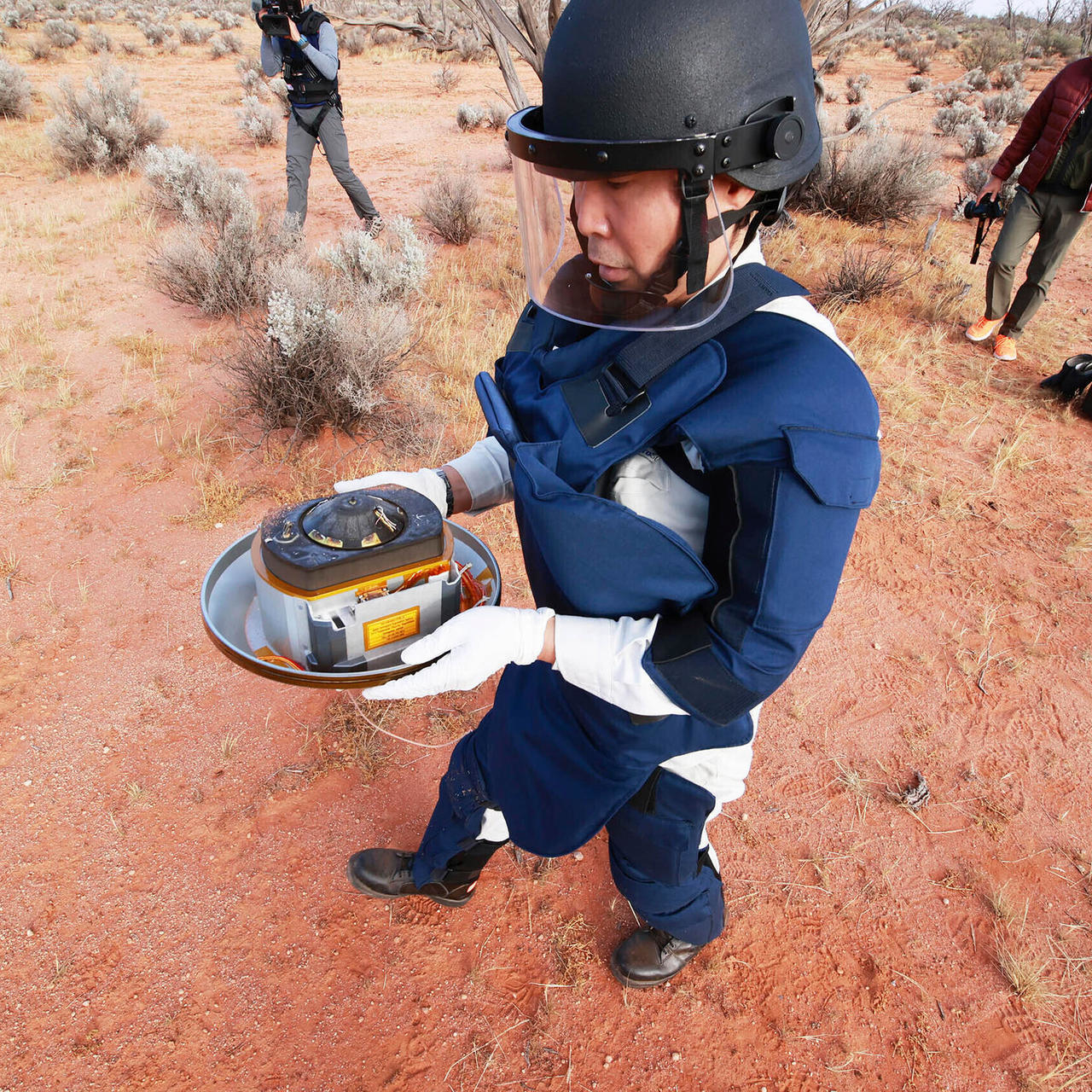
DUST SAMPLES FROM HAYABUSA 2
WHY IN NEWS?
- Hayabusa 2 was launched from Japan’s Tanegashima space centre in 2014 and took four years to reach the asteroid Ryugu.
- The mission builds on the original Hayabusa mission that was launched in 2003 and successfully linked up with asteroid Itokawa in 2005.
IN DEPTH
- It returned samples to Earth in 2010 marking the first time when sample materials from an asteroid were brought back to Earth.
- Hayabusa is the Japanese term used for the peregrine falcon, which is the fastest bird during its hunting dive (200 mile per hour).
- The space probe orbited above the asteroid for a few months to map its surface before landing. Then it used small explosives to blast a crater, collected the resulting debris and headed back to Earth in November 2019.
- The craft’s mission seeks to answer some fundamental questions about the origins of the Solar systemand where molecules like water came from.
Significance:
- Asteroids and comets are primitive bodies that can be considered to be the building blocks of the early Solar system and they hold a record of the birth and initial evolution.
- Larger planets like Earth went through a more complex evolution over which the pristine materials were melted and altered significantly. Due to this change, the materials found on large planets do not hold information into their early stages of formation.
- Asteroids and comets retain a record of when, where and in what conditions they were formed. Exploration of these primitive bodies is essential in gaining insight into the formation of the Solar system.
- Gases trapped in the rock samples could reveal more about the chemical mixture from the planets formed.
- Significantly, among all the reasons that will eventually cause the extinction of life on Earth, an asteroid hit is widely acknowledged as one of the likeliest.
